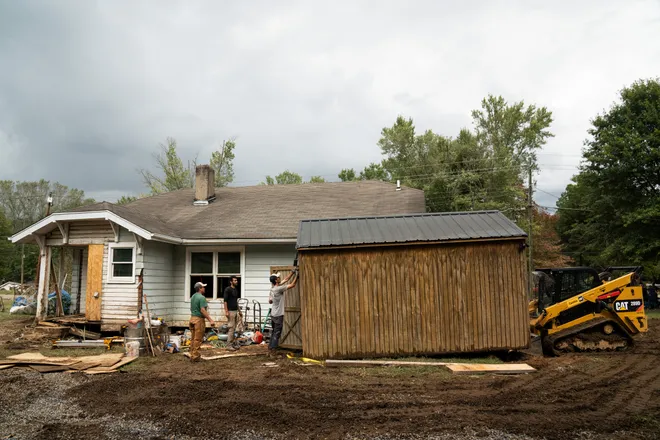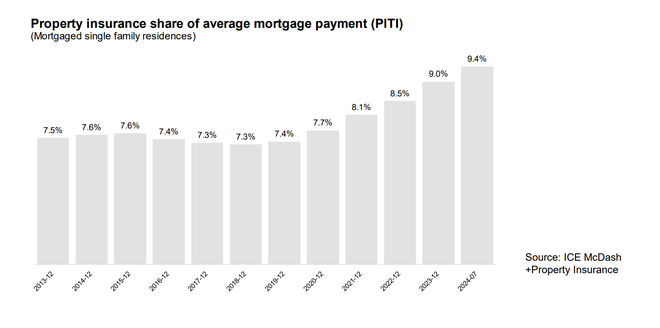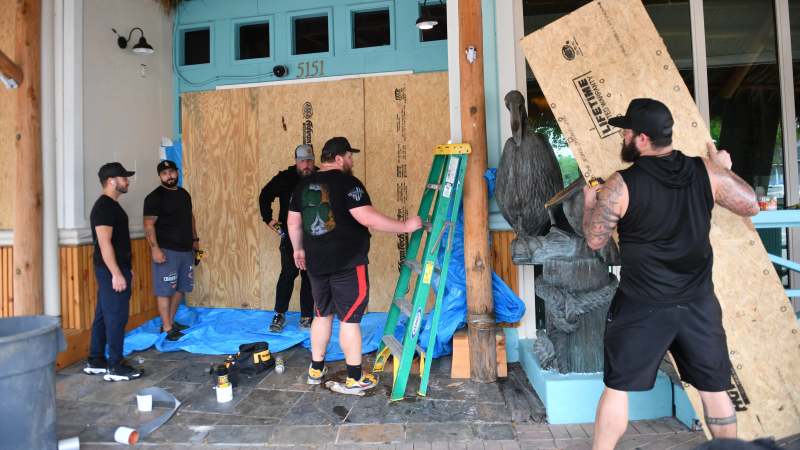Homeownership used to mean stable housing costs. That's a thing of the past.
Americans have long prized homeownership for its financial benefits. It offers perhaps the most surefire way for many people to build wealth. And as long as buyers locked in a fixed-rate mortgage, the thinking has been, monthly housing costs were mostly set.
But that belief is increasingly being questioned as the overall costs of owning a home have soared. Across America, climate change, rising home prices, and other factors are accelerating the costs of property insurance – and to a lesser extent property taxes and utilities. As those variable costs increase, they're grabbing an increasing share of the monthly housing budget, a report out Monday shows.

“Variable costs like taxes and insurance now make up nearly one-third of the average mortgage payment nationwide,” said Andy Walden, vice president of research and analysis at data provider ICE. “For borrowers in more risk-prone areas and areas with higher property taxes, variable costs make up nearly half of the average borrower’s monthly payments, and that’s before you factor in other variable costs of homeownership, like electricity, water, and transportation.”
More:Lower mortgage rates will bring much-needed normalcy to the housing market
ICE's October 2024 Mortgage Monitor shows those gains in stark numbers. On average, property insurance payments are up 52% since 2019. But in some areas of the country, it’s much higher: nearly 90% in some Florida metros like Deltona and Jacksonville, for example. And the spikes aren't just in hurricane-prone places: premiums in the Des Moines area are up 67%, for example, reflecting tornado and hail risk.
Pay less to protect your home: Best home insurance policies

The national average property insurance payment was a record $181 per month in July, ICE’s report found, and insurance premiums now make up 9.4% of homeowners’ monthly payments.
At Neighbors Helping Neighbors, a Brooklyn-based housing nonprofit, counselors are increasingly helping clients who are struggling with rising housing costs. Homeowners’ insurance premiums, property taxes, utilities, and specialty insurance, especially for floods, are all surging.
Best homeowners insurance:Who's at the top in October 2024?
In some cases, homeowners who are still paying their mortgage turn to Neighbors Helping Neighbors, but the organization also hears from those who own their homes in full, said Katelyn Gravell, a homeowner services counselor at the organization.
“For non-mortgaged homeowners, specifically the elderly, they are finding it difficult to make ends meet as is,” Gravell said.

ICE’s Walden echoes the concern about homeowners on fixed incomes, but notes it’s also a challenge for the most highly leveraged borrowers – those with higher interest rates who were already stretching to make their initial payments.
This new normal for variable homeownership costs means mortgage lenders and investors are likely going to have to reassess risk, Walden told USA TODAY.
In the past, the focus has been on the financial and risk profiles of borrowers at the time they take out the loan. Now the challenge will be to understand how those risks – as well as the “growing climate and hazard related risks” to the property itself – evolve after the purchase is complete, he said.
Disclaimer: The copyright of this article belongs to the original author. Reposting this article is solely for the purpose of information dissemination and does not constitute any investment advice. If there is any infringement, please contact us immediately. We will make corrections or deletions as necessary. Thank you.







